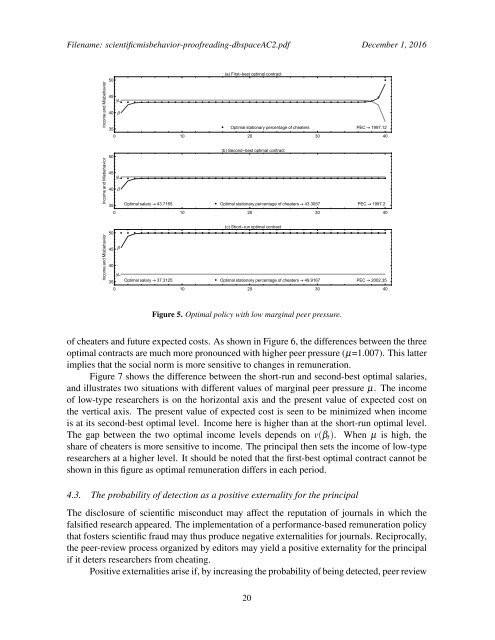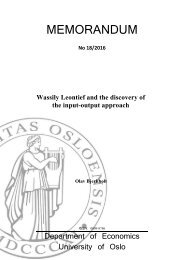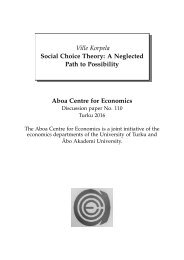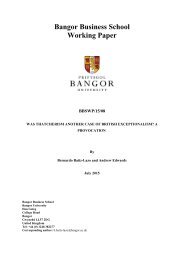Cheat Perish? A Theory Scientific Customs
n?u=RePEc:tut:cccrwp:2016-03-ccr&r=hpe
n?u=RePEc:tut:cccrwp:2016-03-ccr&r=hpe
Create successful ePaper yourself
Turn your PDF publications into a flip-book with our unique Google optimized e-Paper software.
Filename: scientificmisbehavior-proofreading-dbspaceAC2.pdf December 1, 2016<br />
Income and Misbehavior<br />
(a) First-best optimal contract<br />
50<br />
45<br />
yL<br />
40 β<br />
35<br />
Optimal stationary percentage of cheaters PEC → 1997.12<br />
0 10 20 30 40<br />
Income and Misbehavior<br />
(b) Second-best optimal contract<br />
50<br />
45<br />
yL<br />
40 β<br />
35 Optimal salary → 43.7165 Optimal stationary percentage of cheaters → 43.3057<br />
PEC → 1997.2<br />
0 10 20 30 40<br />
Income and Misbehavior<br />
(c) Short-run optimal contract<br />
50<br />
45 β<br />
40<br />
yL<br />
35 Optimal salary → 37.3125 Optimal stationary percentage of cheaters → 49.9167<br />
PEC → 2002.35<br />
0 10 20 30 40<br />
Figure 5. Optimal policy with low marginal peer pressure.<br />
of cheaters and future expected costs. As shown in Figure 6, the differences between the three<br />
optimal contracts are much more pronounced with higher peer pressure (µ=1.007). This latter<br />
implies that the social norm is more sensitive to changes in remuneration.<br />
Figure 7 shows the difference between the short-run and second-best optimal salaries,<br />
and illustrates two situations with different values of marginal peer pressure µ. The income<br />
of low-type researchers is on the horizontal axis and the present value of expected cost on<br />
the vertical axis. The present value of expected cost is seen to be minimized when income<br />
is at its second-best optimal level. Income here is higher than at the short-run optimal level.<br />
The gap between the two optimal income levels depends on v(β t ). When µ is high, the<br />
share of cheaters is more sensitive to income. The principal then sets the income of low-type<br />
researchers at a higher level. It should be noted that the first-best optimal contract cannot be<br />
shown in this figure as optimal remuneration differs in each period.<br />
4.3. The probability of detection as a positive externality for the principal<br />
The disclosure of scientific misconduct may affect the reputation of journals in which the<br />
falsified research appeared. The implementation of a performance-based remuneration policy<br />
that fosters scientific fraud may thus produce negative externalities for journals. Reciprocally,<br />
the peer-review process organized by editors may yield a positive externality for the principal<br />
if it deters researchers from cheating.<br />
Positive externalities arise if, by increasing the probability of being detected, peer review<br />
20





